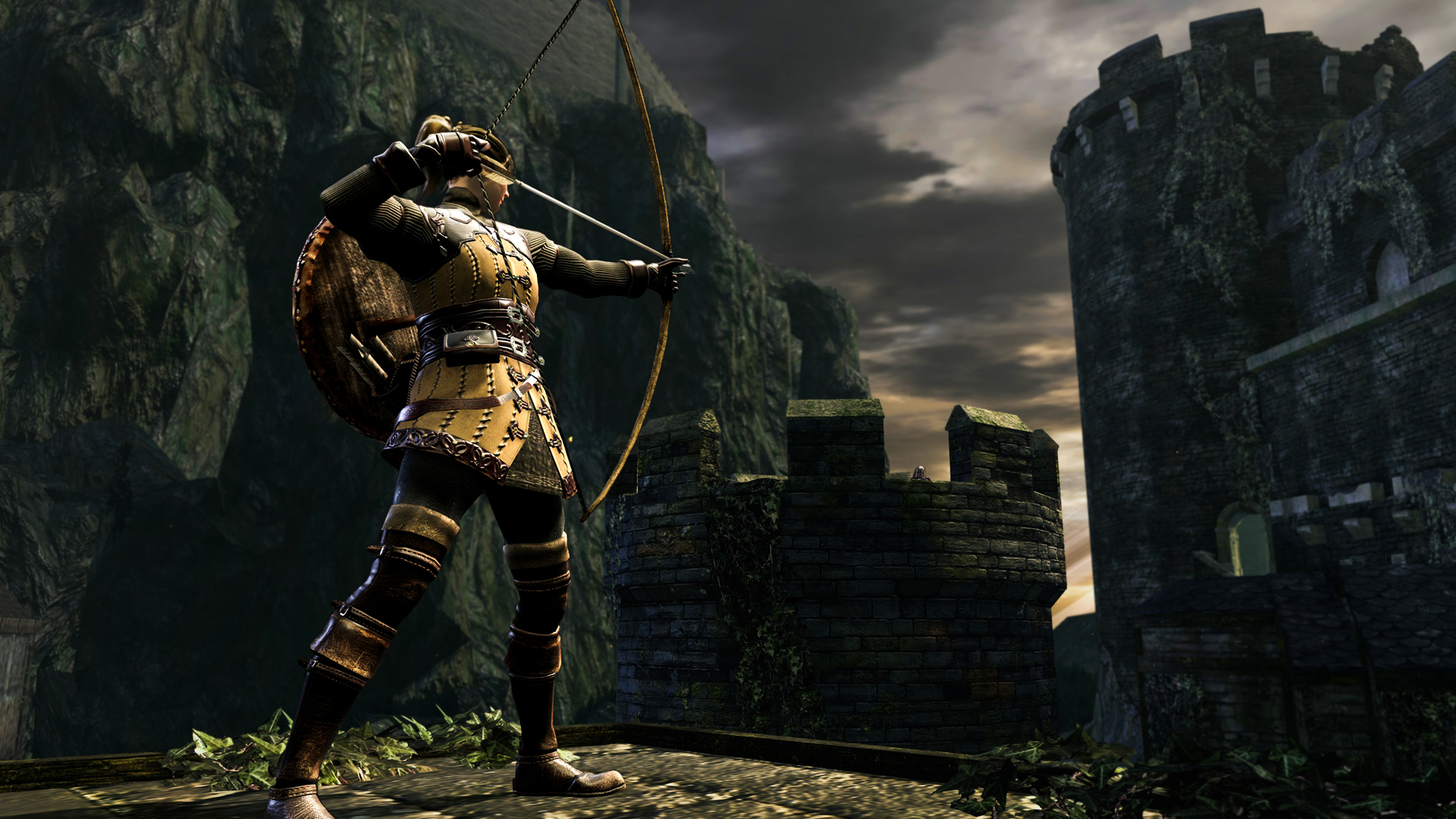Dark Souls: Remastered on the Nintendo Switch is one of portable gaming’s greatest achievements. Having been revered for the legacy it paved on home consoles within game design, storytelling, and combat, the Dark Souls series is long overdue for Nintendo fans to experience and feels unquestionably spectacular when played within the palms of a player’s hands. This new bullet-point that can be added with this most recent iteration, is specifically surrounding how much power the Switch is able to showcase for a game that wasn’t originally conceived on the platform, and how it manages to still be a spectacle even on a tinier screen.

In case you missed it when it first released in 2011 or managed to live under a rock, Dark Souls is genius. The level design is incredibly satisfying to consume, with cleverly placed items and secrets that encourage exploration and contribute to the game’s overall enjoyment. Areas are interconnected into an expansive hub, contributing to the feeling of a living world. As well, with absolutely no loading screens in between areas, even on the Switch version, you can end up playing the game for hours without feeling the desire to take a break or play something else.
There’s an adage with handheld gaming in which, “pick-up and play” or consuming in “short bursts” are desirable terms. However, Dark Souls does not match these descriptions in the slightest. Should a player die, they will not want to take a break or come back to it later? For with the Souls games, there is an engrossing factor in which to recover your Souls (the currency in Dark Souls), you must retrace your steps and recollect them at the area in which you died. This factor made the game incredibly hard for me to put down and led to playing sessions of the game becoming almost 5 hours straight without me choosing something else to play or doing something else.
Emphasizing that I find it difficult to play games for more than an hour at a time, I was perplexed as to how Dark Souls was engrossing me more than when I had first played it on home consoles (as with From Software’s titles the sense of discovery is what makes the first playthrough significantly lauded). It wasn’t the fact that the controls were better since the Xbox 360 controller is much easier to grasp than the Switch’s Joy-Cons. It wasn’t that anything technical was better on the Switch version, with visuals matching the quality of its console counterparts and sound being compressed. And it especially wasn’t the fact that Nintendo’s standard internet services were better than how I first experienced the game, as messages and invasions worked very loosely.

Yet, I think I found as to why I consider the Switch version of Dark Souls one of my favorite games that have been released on the system within the system itself. These long-play sessions were due to the convenience and immersion of having the game directly in my hands. Compared to when the game is disattached and plastered on a television screen, Dark Souls may not look “better” in any way. Yet, the intimacy between the player and the game allows the atmosphere and hooks to feel more enjoyable. Of all the ways to experience the game, the Nintendo Switch version, despite its compromises, is undeniably the best way to experience the type of gameplay that Dark Souls offers. Even with the mystery and surprises already experienced by yours truly, it genuinely felt like I was experiencing the game in a new way due to the psychology of portable gaming.

However, this leads me as to why it’s somewhat disappointing that for those who decide to play it in the Nintendo Switch’s docked mode will be experiencing what could be considered the worst possible version of Dark Souls. As it is (as I mentioned before) a technically inferior port that has a bizarre feature in which all the audio is compressed in a very noticeable way. This is somewhat difficult to notice with just the Switch’s speakers, but it undoubtedly deters the atmosphere that Dark Souls is lauded for. A game that features a commendable musical score and sound design deserves to not have that detail compromised. If anything, the most disappointing part of Dark Souls Remastered is that it seems to be not only the best way to experience the game but also the worst.

Ultimately, Dark Souls: Remastered deserves to be played. For on one standing it’s a masterpiece of game design within its generation, and if you’ve yet to try it or give it a fair shake, maybe now it finally the time to try again. Yet, underneath the ground that supports this idea, the Switch port has compromises in its docked mode that make it seem like it’s the worst way to experience the game (still only by a margin). Yet on the level of portable play, this is one of the most polished ports on the console and should you have yet to delve into Dark Souls’ world of bonfires, dragons, and death; it’s overdue.
